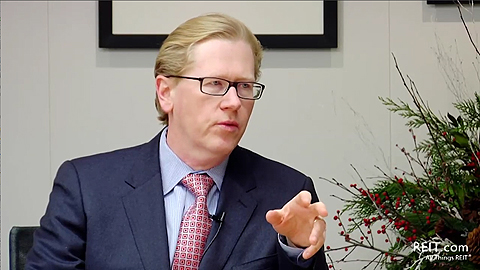 In any analysis, leading indicators work well when there are a lot of them that are mostly moving in the same direction.
In any analysis, leading indicators work well when there are a lot of them that are mostly moving in the same direction.
Sure, you can get an outside shock that ruins your best math. (Spanish sovereign default? Italian bank run? North Korean nuclear issues?) But, in general, if most of the big green lights are flashing, the traffic will flow.
Following this line of reasoning, I wrote in this magazine in March 2011 that the leading economic indicators that I primarily focused on augured for steady job growth in 2011 and 2012. Those indicators worked and are similarly positive today; further, unlike the case in early 2011, slow growth is the consensus now among commercial real estate investors. This slow growth drives commercial real estate fundamentals—occupancies first, rents later— that are the numerator side of the cap rate equation. Which suggests a question: If the numerator side of the cap rate equation looks good, what about the drivers for the denominator side? Surprisingly, they look a lot like 2005.
For the first time in years, all types of real estate capital flows have increased. Increased capital flows generally presage increases in equity values in commercial real estate, just as they do for stocks and bonds.
"For the first time in years, all types of real estate capital flows have increased."
The chart below shows capital flows to commercial real estate across the four quadrants: public, private, debt and equity. Public equity, typically REIT shares, has enjoyed a positive capital inflow since 2009, and share prices have risen. Indeed, REIT capital flows were the first to turn positive in 2009 after leading the market into negative territory in 2007, with a commensurate impact on share prices. Private equity turned the corner next, in 2010, and that’s when the values of the best-quality buildings in major markets began rebounding in earnest. You’ll notice something funny about the chart, though—only recently has more capital been available for every category.
On the debt side: CMBS market? Check. Banks? Lending again. Life companies? Neutral in terms of total investment flow, but not decreasing, either.
On the equity side: Sovereign wealth funds? You bet. Pension funds? Yup. Opportunity funds? Yes. Value-add funds? Pockets full. Core funds? Voracious. Small local investors? Back.
The effects are clear—Class-A apartments and shiny office towers in top-tier central business districts are selling for eye-popping numbers. Some markets look downright frothy. Indeed, most institutional real estate property types in successful cities are selling for very strong numbers. With capital flows like these, that won’t end anytime soon.
While this may not be 2006 again—and we’re hoping it isn’t—the forecast calls for capital.